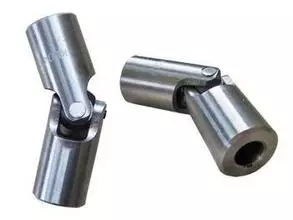Factors to Consider When Choosing Couplings
Couplings belong to the category of machinery general parts, which are used to link two shafts from different organizations (driving shaft and driven shaft), making them rotate at the same time to transmit mechanical parts of torque. In overloaded power transmission at high speed, some couplings play a role in buffer, vibration and enhancing the role of shaft system dynamic performance. Couplings are made up of two parts, connected with driving shaft and driven shaft separately. In general, most engines connect with working machine by means of couplings, which is the most commonly used connection part in mechanical products shaft transmission. In late 20th century, coupling products develop fast in China and abroad, but it is always a problem for most designers about how to select couplings that can satisfy the requirements of the machine from many varieties, various performance couplings when designing products. Commonly used couplings include diaphragm couplings, gear couplings, plum couplings, oldham couplings, drum gear couplings, universal couplings, safety couplings, flexible couplings and bibby couplings.
The followings should be taken into consideration when choosing couplings:
1. Due to factors like manufacturing, installation, loaded deformation and temperature variation, after adjusting installation, it is difficult to keep two axes strictly accurate. There is a certain degree of displacement of X, Y direction and oblique Angle of CI. When the radial displacement is larger, oldham couplings can be chosen; when angular displacement is larger or the intersection of two shaft couplings, universal couplings can be chosen; when larger attaching relative displacement occurs in the process of working, flexible couplings should be chosen.
2. Working speed of couplings and evocable centrifugal force. For high-speed transmission shaft, high balance precision couplings like diaphragm couplings should be chosen, instead of choosing slider couplings that are eccentric.
3. Size and nature of the torque required to transfer and requirements of buffer vibration function. For example, for overloading of power transmission, gear couplings can be chosen; for transmission that has serious impact on load or require to eliminate shafting torsional vibration, couplings with rubber type element can be chosen.

